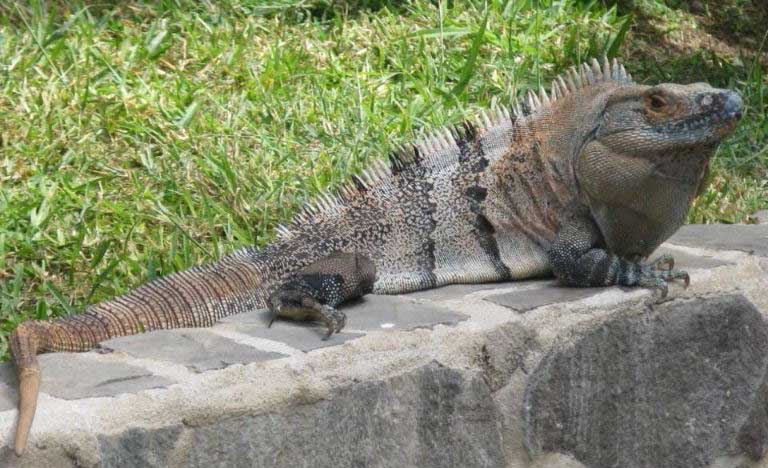Black Spiny Tailed Iguana
The Ctenosaura Similis, more commonly known as the Black Spiny-Tailed Iguana, holds its own as one of the most invasive species in Southern Florida. This native of Central America isn’t imported for the pet trade like the green iguana. Still, the black spiny-tailed iguana has managed to spread out, believed to now number in the tens of thousands.
The black spiny-tailed iguana stands beside the Nile Monitor and the green iguana as three large lizard species that are not indigenous to South Florida. They can be found throughout the coast of the southwest from Marco Island to Tampa Bay, as well as the east coast from No Name Key to Broward County.
It is believed by researchers that species who are not native to the areas they are introduced are harmful to the native animal and plant life. But this is difficult to diagnose scientifically, and as it turns out, the iguana appears to eat almost anything throughout its life. This includes the endangered Curacao bush and the Cordia Globosa. The invasive Brazilian pepper, also known as the Schinus terebinthifolius, spreads through the scat of the Black-spiny tailed Iguana.
Growth in population
It only takes a few of these iguanas to be released into the wild for the population to bloom. One female Ctenosaur is capable of producing hundreds of offspring in her lifetime. Furthermore, sperm within the female Ctenosaur is viable for years, which allows her to continue laying fertilized eggs even without a male present.
Black-spiny tailed iguanas enjoy warm temperatures and sandy areas, which allows them to burrow. This makes laws in suburban South Florida ideal habitats.
Spiny Tailed Iguana
Black Spiny-tailed iguanas hail from Central America, indigenous to areas such as Honduras, Guatemala, and the southern regions of Mexico. Spiny-tailed Iguanas are meat-eaters, unlike their green cousins. They are known to eat other lizards, mice, or any other small animal they can catch. They prefer to live in dark areas such as tree hollows, rocky holes, or a burrow they dug themselves. If they are cornered, they will turn to bite, so be careful if you have one skulking on your property.
The Green Iguana is not from Florida, but instead South America. They are vegetarians who have an adaptable diet and prefer to live in trees. Green Iguanas tend to retreat to shady spots during sweltering days and only emerge to eat when the temperatures are more ideal for them.
Spiny tails live in burrows instead of trees.
Spiny-Tailed Iguanas like to live in holes or burrows they dug themselves. They will enter pipes through rooftops where they will sometimes come out of toilets. They also prefer hollows in trees and any other cavity they find themselves in. They have been known to have a more aggressive temperament than their green counterparts. And their burrows are usually connected and extensive.
If you have spotted a green or spiny-tailed iguana anywhere on or around your property, be sure to call Wildlife Removal Services. We have over 20 years of experience in Iguana removal, iguana trapping, and iguana sharpshooting services when necessary.

